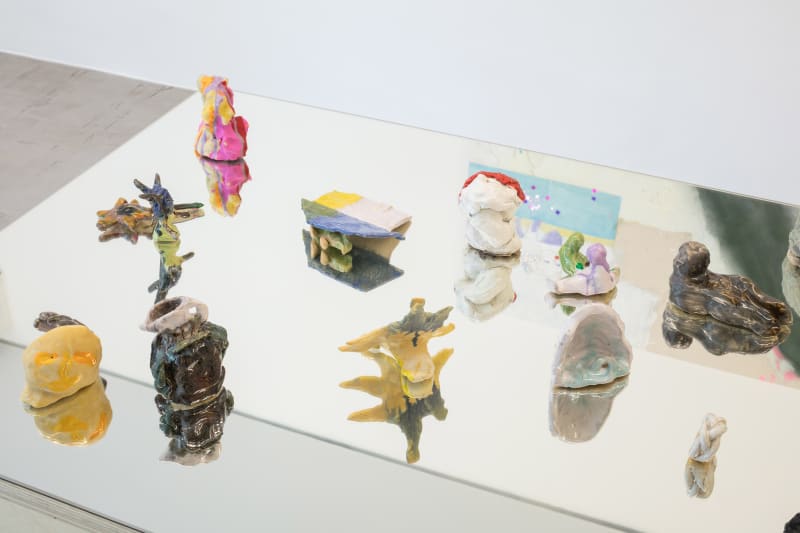A set of paintings and small sculptures by Maíra Senise emerge - one from the other - as part of an imaginary that blends together disconcerting fables and a daily life of feminine ornaments, from nail polish to glitter.
Yes, what we see between the vases are little animals, and the colour palette does oscillate mainly along pastel shades, but the artist’s painting disfigures the passivity of a universe that is childish only in appearance by constructing deviations of form and intertwining the human and the animal.
Picasso once said that it had taken him his entire life to learn how to paint as child, since what appeared to be devoid of sense in the child’s scribbles was actually the beginning of form. In the geometry of Cezanne’s apple we see the beginning of things, of all things, the linear schemata, not as a reduction of the world, but an expansion of the origin as expression. Abstraction, however, was to follow down the informal route of world disfiguration.
A familiar landscape with a house and a garden holds strange characters, as though they were menacing creatures that surface with the purpose of disfiguring what seemed innocent. A girl in pink is seen holding a head, an outstretched deformed doll, out of scale animals haunt what could compose an orderly, idyllic world. On the contrary, we witness the disorderly, we see what is taking shape in a raw, as yet unpainted background. What is presented, then, is a road to abstraction, an abstraction that doesn’t stop at evading figurativeness and insists on a different construction in which what we see cannot be recognised or identified because it remains within the inorganic, unimagined world conceived by the artist.
The small sculptures are like animals that have fallen out of the canvases, unnerved by this new world, their contours warped by senseless motion. Being small-scale, they add a glow to the scenes taking place in the paintings. Both Maíra’s paintings and sculptures follow the same poetic and aesthetic principles – the devenir-animal spread through equivocal landscapes amid spilled jars of paint.
Animals disoriented by lightning watch us from the chilling other side of Maíra’s images, welcoming us in the joy of glowing colours while, at the same time, frightening us as gargoyles suspended on castles and churches, spitting rainwater into rainbows or the mid-day sun.
Katia Maciel

